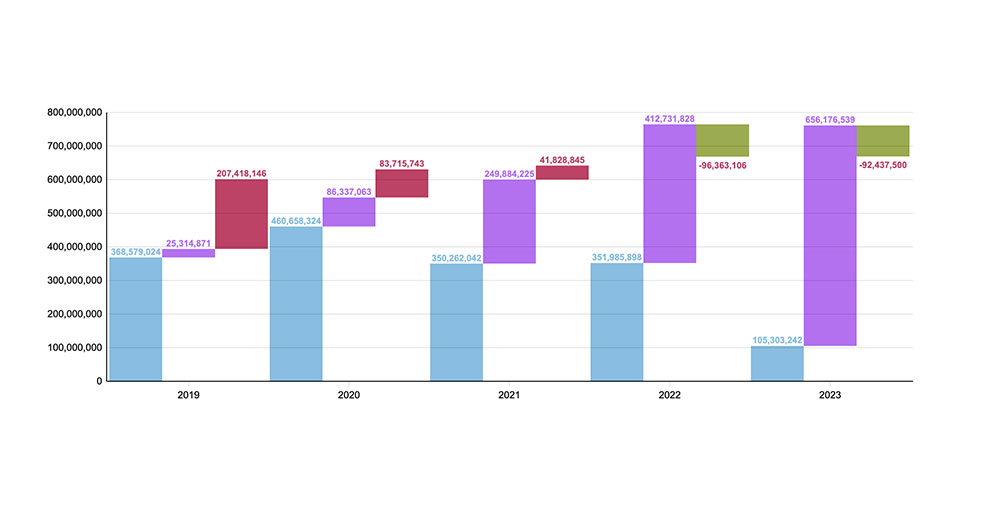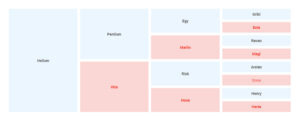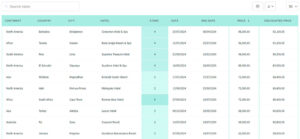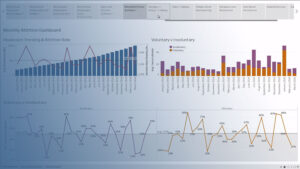Picture this: a cascade of numbers, each spilling into the next, mapping out a story in raw data. That, my friends, is the essence of waterfall charts.
A staple in the world of financial plotting, they slice through the fog of complex data to deliver clear insights. Whether you’re a rookie analyst or a number-crunching veteran, mastering these charts is non-negotiable.
By the close of this article, you’ll have unpacked the methodology of crafting a compelling waterfall chart. You’ll conquer Excel chart types with the finesse of a maestro and reveal the subtleties of financial reporting tools with ease.
Prepare for a deep-dive into:
- The alchemy of turning numbers into narratives
- Techniques that promise precision and clarity
- Polishing your data analysis prowess
Table of Contents
- What Is A Waterfall Chart?
- Waterfall Chart Example
- When To Use A Waterfall Chart
- How To Read A Waterfall Chart
- Types Of Waterfall Charts
- How To Make A Waterfall Chart In WordPress
- How To Make A Waterfall Chart In Excel
- How To Make A Waterfall Chart In Google Sheets
What Is A Waterfall Chart?
A waterfall chart is a data visualization tool that displays sequential changes in values over time. It’s like a visual step-by-step journey, starting with an initial value and showing the cumulative effect of positive or negative data points, leading to a final result. Perfect for financial analysis and insightful storytelling.
Waterfall Chart Example
Chart created with wpDataTables
When To Use A Waterfall Chart
When the tale you’re spinning is all about the financial journey, that’s when you let a waterfall chart take the stage.
Imagine breaking down that annual revenue report, laying out each increment and drop along the fiscal year’s roller coaster. Or, say there’s a story behind a profit and loss statement needing to unfold—this is your go-to chart.
It’s about connecting dots that show how you’ve climbed or dipped, translating complex data analysis into a powerful narrative. Use it when illustrating budgets, forecasting, or any scenario where the path from A to B craves a clear, visual tale.
How To Read A Waterfall Chart
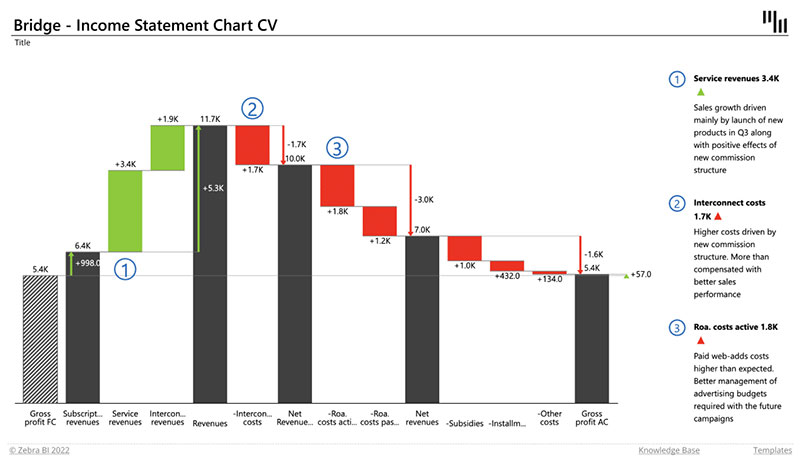
Okay, so, you’ve got this waterfall chart in front of you, right? Each bar, it’s like a chapter in a book. Some shoot up, show you the gains; others, they drop—revealing costs or losses.
Start on the left. That’s your baseline. Now, stroll through the bars. Green ones? They’re like little victories, adding to your story. Red bars? Plot twists, where things took a hit. Finally, you land on that last bar. That’s your climax—the ending balance.
And throughout, keep those eyes peeled for those subtle shifts. They’re like whispers, nudging the plot along. Whether it’s a cumulative flow, revenue shifts, or an epic cost-benefit analysis, by the end, you’re not just reading numbers. You’re reading a story, with all its ebbs and flows.
Types Of Waterfall Charts
Dive into the world where waterfall charts come in a few different flavors, each with a story to tell. Let’s break it down:
- There’s the classic revenue waterfall, a champ at sifting through monthly sales figures.
- Then, cumulative flow diagrams step up to the plate, brilliant at displaying ongoing totals.
- Ever heard of the inventory movement chart? That’s for the stock managers, tracking ins and outs like a hawk.
- And hey, for the money maestros, earnings charts work like financial fortune tellers, mapping out the fiscal magic.
Each type, it’s got its own stage, its own audience. Choose the chart that tells your story best whether it’s in the boardroom, the backroom, or the stockroom.
That’s the beauty of data design; picking the perfect visual to spotlight the story behind the stats.
How To Make A Waterfall Chart In WordPress
Creating a waterfall chart in WordPress using the wpDataChart Wizard from the wpDataTables plugin involves several steps. Here’s a summary of the process:
- Access Chart Creation Wizard: In your WordPress admin panel, go to wpDataTables -> Create a Chart. Here, you’ll define a chart name for easy identification later and choose a render engine (Google Charts, Highcharts, Chart.js, or ApexCharts).
- Select Data Source: Choose the table that will serve as the data source for your chart using a simple select box.
- Define Data Range:
- Column Range Picker: Select the table columns to be used in the chart. You can reorder these columns as needed.
- Row Range Picker: Select specific rows or ranges for the chart. You can choose all rows or select individual rows or row ranges.
- Follow Table Filtering: This option is available if you choose “All rows” in the Row Range. It allows the chart to reflect any filtering applied to the table.
- Formatting and Preview:
- Adjust basic chart options like width, height, background color, border properties, and more.
- Customize series options, including label, color, and type.
- Configure axes options, including grid, labels, and crosshairs.
- Set main title options and tooltip settings.
- Adjust legend settings, including enabling/disabling, background color, layout, and position.
- Define exporting options for users to download the chart in various formats.
- Experiment with settings and see a live preview of the chart.
- Save and Use the Chart: Once satisfied with the preview, save the chart. A shortcode will be generated, which you can copy and use to insert the chart into a WordPress post or page.
The wpDataTables plugin provides a user-friendly interface to create responsive and interactive charts, including waterfall charts, for WordPress websites. The step-by-step wizard makes it easy to customize the chart according to your data visualization needs.
How To Make A Waterfall Chart In Excel
To whip up a waterfall chart using Excel, here’s the rundown:
- Handpick Your Data: You’ve got numbers that need storytelling. Grab the cells that contain the saga’s digits. Playing with non-neighbors? No sweat. Ctrl (Cmd for the cool Mac folks) is your trusty sidekick here.
- Summon the Waterfall Chart: Hit up the Insert tab, find that Waterfall chart lurking under the Charts section, and let it make its grand entrance.
- Tweak the Masterpiece: Deployed the chart? Solid. Now roll up your sleeves—it’s time to refine. Tag your data labels, crown your totals or lesser nobles, craft that compelling title, and size it right.
- Data Labels, You Say?: Is your chart turning into a mosh pit of labels? Clear the dance floor by hitting the Chart Elements (+), and give Data Labels the boot. Or just smack Delete after clicking one that’s crashing the party.
- Coronate Your Totals/Subtotals: Got a data pillar that’s reaching for the stars? Anoint it as your total or sub with a couple of clicks and a tick in the “Set as total” coronation box.
- Chart Title Makeover: Click that title area and key in a marquee that grabs eyeballs. Or double-tap an old one to spruce it up.
- Stretch or Squash the View: Play with those handles! You’ve got eight; drag ‘em to scale your chart’s horizon or craft its silhouette.
- Axis Titles – Yea or Nay: Toss in axis titles with a click on that Chart Elements (+), finding your way to the Axis Titles option. Typing your titles is as easy as a double-click.
- Stylin’ and Profilin’: Now for the grand finale. Let the Design and Format tabs unleash your inner artist. Or dip into the Quick Layout for some snazzy prefab combos.
Excel’s waterfall charts are your trusty sidekicks for making those numbers sing, whether it’s cash flow, moving inventory, or tracking those sales highs and lows.
How To Make A Waterfall Chart In Google Sheets
To create a waterfall chart in Google Sheets, you can follow these steps:
Simple Waterfall Chart
- Prepare the Data: Initially, set up your data in a simple format.
- Shape the Data: Create a new table adjacent to the original data with columns for Base, Endpoints, Positive, and Negative.
- Apply Formulas: Use specific formulas for different parts of the table to calculate the values for each column.
- Create a Stacked Column Chart: Highlight the new table and insert a chart, selecting the stacked column chart type.
- Make the Base Transparent: Adjust the Base column color to none.
- Format the Chart: Choose suitable colors for the series, format axes and titles, and remove the legend.
FAQ About Waterfall Charts
Why are waterfall charts used in business?
Business is all about the bottom line, and waterfall charts are the secret sauce for breaking down complex financial shenanigans.
They brilliantly dissect revenue or cost changes over a period, making performance metrics tracking a breeze. They’re a dashboard superstar for those corporate presentations.
Can waterfall charts show cumulative value?
Absolutely! That’s their bread and butter. A waterfall chart thrives on compiling values as they progress.
Start with your initial value, and watch each subsequent bar adjust the total tally—right up to your grand finale. Cumulative flow diagram? That’s just another name for this financial hero.
What’s the difference between a waterfall chart and a stacked bar chart?
Think of it as order versus chaos. Waterfall charts guide you through a story, step by analytic step.
Stacked bars?
More like a static snapshot of categorically lumped data. Waterfall charts are the narrators of change, while stacked bars are categorical librarians, shelving info without the drama.
How can you use waterfall charts for budget analysis?
When crunching budget numbers, waterfall charts are king. Start with your budget baseline, then use the bars to track each expenditure or income, bringing you to your current financial stance.
It’s crystal clear visual storytelling, displaying where each penny pinches or stretches your budgetary belt.
What’s the ideal data set size for a waterfall chart?
Less is more—keep it to key financial data points that matter. Overwhelm the chart, and your message drowns.
Aim for around 5-15 elements, enough to paint a picture without turning it into a messy Pollock painting. Optimize for the Eureka, not the migraine.
How can you interpret a waterfall chart?
Stand back, squint a little, and see the flow. Each bar is a chapter—rise and falls in your data tale. Look for the tall towers (big increases) and deep dungeons (sharp drops).
They’re the plot twists in your financial narrative or operational saga. Pause, ponder, and proceed.
Can waterfall charts be used for forecasting?
Forecasting with waterfall charts? Sure thing! They’re like a crystal ball for number crunchers.
Start with existing data; stretch out your projections as if you’re drawing the map to treasure trove. Sure, it’s speculative, but with careful assumptions, you’ll have a convincing forecast tale to tell.
Do waterfall charts work with negative values?
They don’t shy away from the dark side. Waterfall charts embrace negative values like moths to a flame, showing declines just as deftly as gains.
Those drops can represent cost increases, revenue dips – the essential downbeats to your up-tempo financial rhythm. It’s all about the yin and yang of your data.
Conclusion
So, we’ve surfed the cascading waves of waterfall charts. These visual maestros orchestrate our data into a narrative that sings, doesn’t just tell.
They’re the jazz of the data visualization techniques, offering solos that clarify just where we rocked or, you know, didn’t.
Imagine them as the unsung heroes in your Excel chart types. They don’t just stand there; they move, they evolve.
What began as numbers strewn across a spreadsheet now holds the power of story – from the first bar to the last, every step charted with precision.
- Financial reporting tools? Upgraded.
- Business intelligence insights? Amplified.
Your takeaway? Flip open that laptop, conjure up those financial plotting skills, and let those charts flow.
Cascade graph, revenue waterfall, whatever you call it, the power to enlighten and persuade is now yours. Armed with this knowledge, every presentation, profit analysis, or performance review is set to make a splash. Dive in!
If you liked this article about waterfall charts, you should check out this article about bar charts.
There are also similar articles discussing pie charts, candlestick charts, line charts, and bubble charts.
And let’s not forget about articles on stacked bar charts, area charts, column charts, and donut charts.


